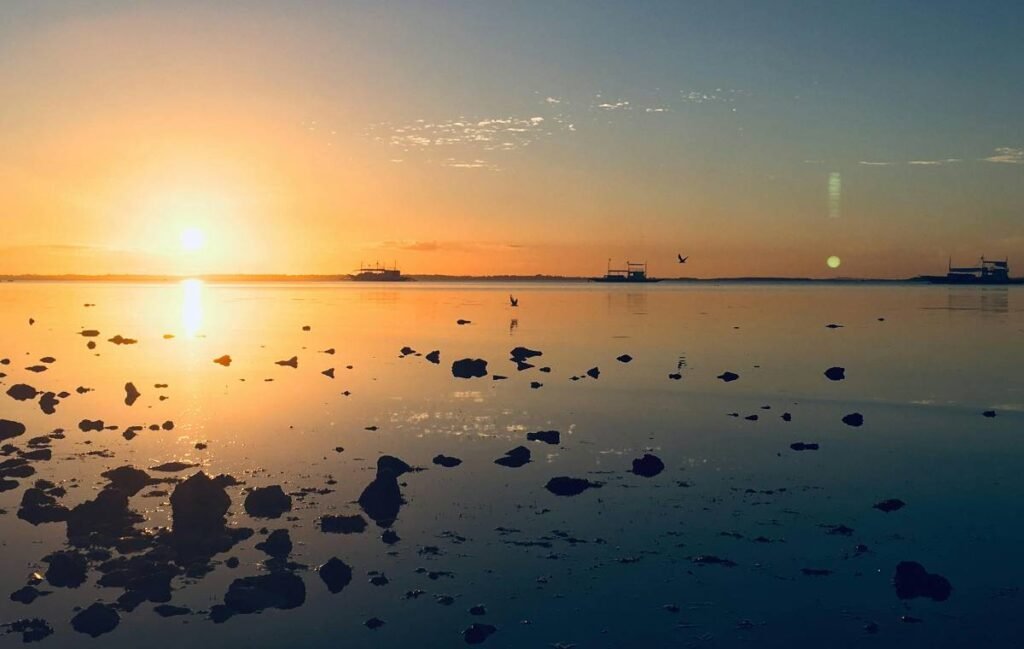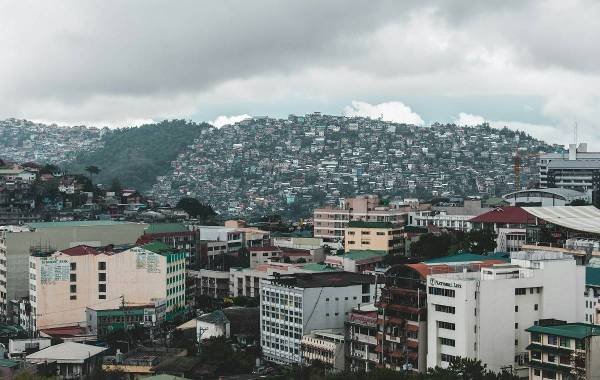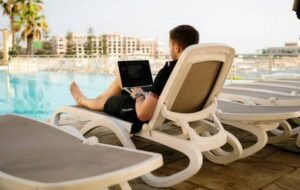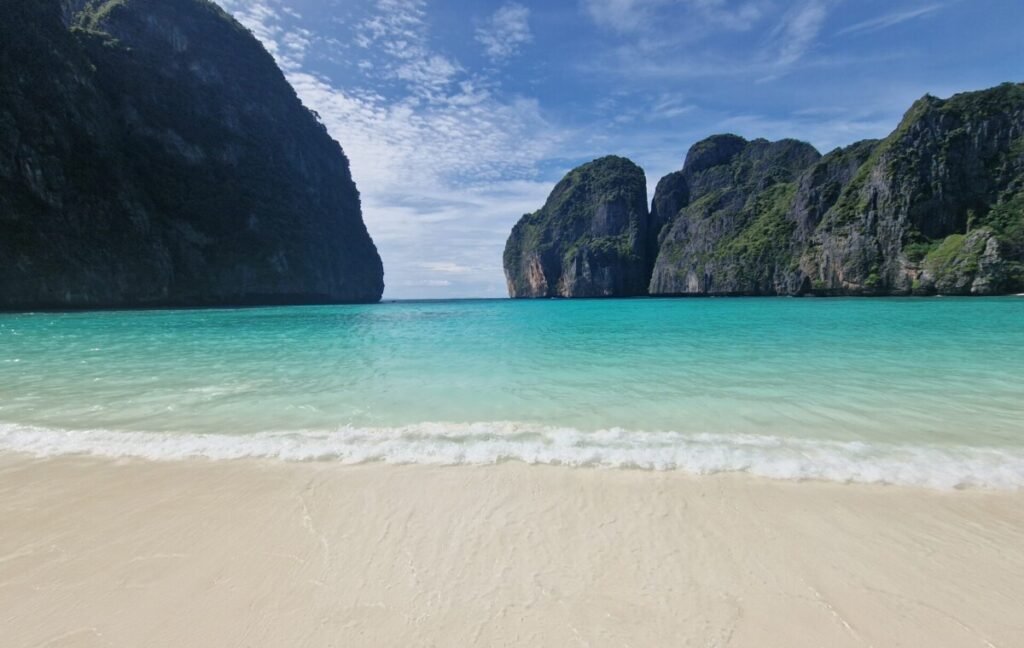
Digital Nomads – 5 Best Places
in The Philippines
The 5 Best Places for Digital Nomads in The Philippines
The Philippines offers many opportunities for digital nomads looking for a balance of work and adventure. This article will highlight the best places for you to set up your mobile office and explore the local culture, while being in one of the most beautiful places in the world.
From busy cities like Cebu City to coastal areas such as El Nido, you will find that each destination provides unique benefits. No matter if you’re after affordable living, strong expat communities, or reliable internet connectivity, this guide has got you covered with all the essential details. So let’s dive in and see if this is your next stop on your digital nomad journey!

Heya! I’m Juan, I’m a recent newcomer to the travel scene but I am loving every minute of it. I am eager to share my stories and experiences as I go 🙂
Affiliate Disclosure: Some of the links on our site are affiliate links, meaning, at no additional cost to you, we may earn a commission if you click through and make a purchase. This helps us to continue providing valuable content and supports our efforts in bringing the travel community together. We only recommend products and services we believe in and think you’ll find useful. Complete details are included in our affiliate disclaimer. Thank you for your support!
In a Hurry? Here's our Key Info for This Article
- Cebu City is ideal for those looking for strong infrastructure and reliable internet connectivity.
- Boracay offers the perfect mix of work and play with its stunning beaches and nightlife.
- Baguio is a great choice for escaping the heat with its cooler climate and beautiful mountain views.
- Palawan stands out for its pristine natural beauty, attracting digital nomads who love outdoor activities.
- Makati is the business hub, providing excellent coworking spaces and networking opportunities.
Stay Connected
Things to Do
Essential Apps
Surfshark VPN
Stay safe online and continue accessing all your services just like back home.
Budget Tips
What is a Digital Nomad?
A digital nomad is someone who uses technology to work remotely while travelling. You could be sitting in a café in Bali one week, then logging in from a co-working space in Tokyo the next. This lifestyle isn’t limited to tech jobs, writers, marketers, designers, and even educators are choosing the nomadic life. The key is a reliable internet connection and portable work tools like a laptop or smartphone. Flexibility is crucial, as you might find yourself adjusting to different time zones and local customs.
Other Work Remotely in Asia
The 5 Best Places for Digital Nomads in The Philippines
| Destination | Best for | Best Time to Visit | Average Wifi Speeds |
|---|---|---|---|
| Manila | Urban amenities | December to February | 20 Mbps |
| Cebu City | Food and culture | January to May | 15 Mbps |
| Boracay | Beaches | November to April | 10 Mbps |
| Palawan | Nature | November to May | 8 Mbps |
| Makati | Business hubs | December to February | 25 Mbps |
1. Manila
Manila, the heart of the Philippines, is a city bursting with energy. It’s a mix of old-world charm and modern advances, making it a new and exciting space for digital nomads.


Top Attractions
Manila’s top attractions offer many experiences that are filled with it’s long, colonial past. For a touch of nature, Rizal Park provides a green space perfect for relaxation. The National Museum of the Philippines showcases the country’s diverse cultural heritage. If you’re into shopping, Greenbelt Mall and SM Mall of Asia offer a large amount of options to get your shopping fix. For nightlife, Bonifacio Global City (BGC) is the place to be with its trendy bars and clubs. Don’t miss a sunset view over Manila Bay to grab a cocktail and relax at the end of a long work day.
Best Time to Visit
Visiting Manila between November and February is ideal due to cooler temperatures and less humidity. The festivals during this time add extra excitement, but do anticipate larger crowds. Always keep the time of year into consideration, as August can bring hurricanes and other natural disasters that may want to be avoided.
Local Cuisines
Manila’s culinary scene is unique and convenient. Filipino cuisine is hearty and flavourful, with a mix of indigenous, Spanish, Chinese, and American influences. Here are some must-try dishes:
– Adobo: A savory stew made with chicken or pork, marinated in vinegar, soy sauce, garlic, and spices.
– Lechon: Whole roasted pig known for its crispy skin and juicy meat, often served at celebrations.
– Sinigang: A tangy soup made with pork, shrimp, or fish, and flavoured with tamarind, tomatoes, and various vegetables.
– Halo-Halo: A popular dessert with shaved ice, evaporated milk, and a mix of sweetened fruits, beans, and jellies.
Always remember to also take advantage of Manila’s delivery services when on your lunch breaks or a quiet night in for some great traditional food at your doorstep.
Budgeting for Manila
Manila is quite affordable. You can find decent accommodations starting at $30 per night. A meal at a mid-tier restaurant typically costs around $10. This makes it an attractive destination for those looking for affordable living in the Philippines.
2. Cebu City
Cebu City, known as the Queen City of the South, is a busy hub of commerce and culture in the Philippines. It is the perfect mix of busy city life and incredible scenery, making it one of the top spots for digital nomads in the Philippines.


Top Attractions
There are numerous attractions in Cebu City to captivate your interest. Start with a visit to the Basilica Minore del Santo Niño, the oldest Roman Catholic church in the country, which houses a statue of the Holy Child. For history buffs, Fort San Pedro, a military defence structure built by Spanish and indigenous Cebuano laborers, is a must-see. Nature lovers will enjoy the Sirao Flower Garden, often referred to as the “Little Amsterdam” of Cebu, with its stunning celosia flowers and European style.
For some adventure, head to the Tops Lookout for views of the city and surrounding islands. And don’t miss Magellan’s Cross, a symbolic icon marking the arrival of Christianity in the Philippines. Lastly, the Cebu Taoist Temple offers a peaceful retreat with intricate architecture and surroundings for some peace and quiet.
Best Time to Visit
The optimal time to visit Cebu City is during the dry season, which spans from November to May. This period ensures sunny weather perfect for exploring the city’s attractions. Be mindful that the months of January and February can get crowded due to the Sinulog Festival, a cultural event celebrating the Santo Niño. This may hike up prices and be a little chaotic but will be a fun and unique experience.
Local Cuisines
Cebu City’s culinary scene is a delightful mix of traditional Filipino dishes and unique local flavours. Here are some must-try dishes:
– Lechon: Often hailed as the best roasted pig in the Philippines, Cebu’s lechon is crispy on the outside and tender on the inside.
– Puso: Rice cooked in woven coconut leaves, a perfect side dish for any meal.
– Ngohiong: A Cebuano version of spring rolls, filled with vegetables and meat, seasoned with five-spice powder.
– Tuslob Buwa: A unique dish where pork brain and liver are sautéed with spices and eaten by dipping rice balls into the bubbling mixture.
Budgeting for Cebu City
Cebu City can be quite affordable. Accommodation can range from $20 to $100 per night, depending on your preferences. A meal at a mid-tier restaurant will cost you around $10 to $20. For budget travellers, street food and local eateries offer delicious, affordable options and making sure that you understand the tipping culture in the Philippines is vitally important to avoid some awkward situations when eating out.
3. Boracay
Boracay, a small island in the Philippines, is famous for its white sand beaches and crystal-clear waters.


Top Attractions
White Beach is Boracay’s crown jewel, stretching four kilometres and divided into three stations, each offering unique experiences. Station 1 boasts the most upscale resorts, Station 2 is the place to be for nightlife and dining, and Station 3 provides a more quiet setting. Bulabog Beach on the island’s eastern side is a haven for windsurfing and kiteboarding enthusiasts for those who want some outdoor activities outside of work.
Mount Luho, the highest point on the island, offers panoramic views that are absolutely worth the short hike and bring a high definition camera, something like the Insta360 to capture the view from the top, you wont regret it. If you’re into diving, the Crocodile Island dive site is full of marine life. D’Mall, a quirky outdoor shopping centre, is perfect for grabbing local souvenirs and enjoying street food while on a budget.
Best Time to Visit
November to May is the prime time to visit Boracay. The weather is dry, and the sea is calm, making it ideal for water activities. June to October is the monsoon season, which can be less predictable and may affect your plans and safety during hurricane season.
Local Cuisines
Boracay’s culinary scene is a delightful mix of local and international flavours. Key dishes to try include:
– Chori Burger: A mouth-watering sandwich featuring grilled chorizo sausage.
– Grilled Seafood: Freshly caught fish, prawns, and crabs grilled to perfection.
– Halo-Halo: A popular Filipino dessert made of shaved ice, sweetened beans, fruits, and leche flan.
– Chicken Inasal: Marinated chicken grilled over hot coals, best enjoyed with rice and dipping sauces.
Budgeting for Boracay
Boracay caters to various budgets. Accommodation ranges from $30 per night for budget options to $300 for luxury stays. A meal at a mid-tier restaurant typically costs around $10-$15. The island offers affordable living in the Philippines without compromising on experiences.
4. Baguio
Baguio, nicknamed the “Summer Capital of the Philippines,” offers a refreshing escape from the tropical heat, thanks to its elevation and pine-scented air.


Top Attractions
For nature lovers, the Botanical Garden is a must-see, filled with flowers and quiet atmosphere. Burnham Park is perfect for a boat ride or a picnic. History buffs will appreciate the Baguio Cathedral and the Mansion House, the latter being the official summer residence of the President of the Philippines.
For shopping and local crafts, head to the Baguio City Market where you can find everything from fresh strawberries to handmade souvenirs. If you enjoy a bit of adventure, the nearby Mount Pulag offers hiking trails with stunning sunrise views.
Best Time to Visit
The best time to visit Baguio is during the dry season, from November to May. This period offers pleasant weather perfect for exploring the city’s outdoor attractions. However, if you don’t mind a bit of rain, the Panagbenga Festival in February is a celebration of flowers that’s worth experiencing.
Local Cuisines
Baguio’s cuisine is influenced by its cool climate and fertile surroundings. Here are some must-try dishes:
– Strawberry Taho: A sweet treat made of silken tofu, syrup, and fresh strawberries.
– Pinikpikan: A traditional chicken dish prepared with etag (cured meat) and native herbs.
– Ube Halaya: A creamy, sweet dessert made from purple yam.
– Sundot Kulangot: A local delicacy made from glutinous rice and coconut milk, often served in small coconut shells.
Budgeting for Baguio
Baguio is budget-friendly. For accommodation, you can expect to pay around $20-$50 per night for a mid-range hotel. Dining at a mid-tier restaurant will cost approximately $10-$15 per meal. This city is also budget friendly for long term stays, finding apartments for about 300- 500$ a month for those who want a more settled place to work.
5. Palawan
Palawan is a stunning archipelago in the Philippines known for its crystal-clear waters, limestone cliffs, and marine life.


Top Attractions
Palawan is home to some of the most breath taking natural wonders in the Philippines. The Puerto Princesa Subterranean River National Park is a UNESCO World Heritage site and one of the New7Wonders of Nature, where you can explore an underground river system. El Nido is a paradise for island-hopping, offering lagoons, pristine beaches, and snorkelling spots. Coron is another must-visit for its spectacular shipwreck diving sites and Kayangan Lake, often dubbed the cleanest lake in the country. For a quieter experience, head to Port Barton, a quiet village with beautiful beaches and coral reefs.
Best Time to Visit
The best time to visit Palawan is during the dry season, which runs from November to May. This period offers sunny weather and calm seas, ideal for island-hopping and diving. However, it’s also the peak tourist season, so expect higher prices and larger crowds.
Local Cuisines
Palawan’s cuisine is a delightful mix of traditional Filipino flavours and unique local twists. Must-try dishes include:
– Tamilok: A woodworm delicacy often served raw or fried, known for its oyster-like taste.
– Nido Soup: Made from bird’s nest, this soup is considered a luxurious and nutritious dish.
– Lato Salad: Also known as sea grapes, this salad features a type of seaweed that pops in your mouth.
– Crocodile Sisig: A crunchy and savoury dish made from crocodile meat, offering a unique take on the classic Filipino sisig.
Budgeting for Palawan
Palawan offers a range of options for different budgets. Accommodation can vary from $20 per night in budget guesthouses to $200 in more luxurious resorts. A meal at a mid-tier restaurant will cost you around $10 to $15.
Packing Guides and Tips
When planning your trip to the Philippines as a digital nomad, packing is essential. Given the tropical climate, lightweight, breathable clothing is key. Think cotton shirts, tank tops, shorts, and swimsuits. However, don’t forget a light jacket or sweater for cooler evenings, especially if you plan to visit places like Baguio, known for its cooler temperatures. Comfortable walking shoes are a must, especially if you’re exploring the urban streets of Makati or the sandy beaches of El Nido.
Tech gear is another crucial aspect. Reliable internet connectivity in the Philippines can sometimes be a challenge, so bringing a portable Wi-Fi device or a good SIM card with a data plan is advisable. Ensure your laptop is protected with a sturdy case, and pack an extra charger and power bank. If you’re planning to stay in popular digital nomad hotspots Indonesia as well, check that your tech gear is compatible with voltage requirements.
Lastly, consider health and safety. Pack a basic first aid kit, including any prescription medications you might need. A good insect repellent is essential, particularly for areas like Palawan where mosquitoes can be bothersome. Another essential is grabbing some travel insurance before you head out in case of emergencies. Don’t forget your sunscreen and a reusable water bottle to stay hydrated. Being prepared ensures you’ll have a smooth and enjoyable stay in the best places for digital nomads in the Philippines.
Other Work Remotely in Asia
Concluding Thoughts
If you’re looking to find yourself in the best places for digital nomads in The Philippines, personally I think that Cebu City and Boracay should be at the top of your list. Cebu City offers a mix of urban comforts and historical sites, while Boracay is perfect for those who want to mix work with beach relaxation. The connectivity and amenities in both locations make them ideal spots for remote work.
Additionally, the community of digital nomads in The Philippines is growing, providing ample networking opportunities. Your journey through these spots around the country will not only boost productivity but also offer a unique cultural experience, while being in one of the most beautiful places on the globe. Pack your gadgets and get ready for an adventure that balances work and leisure perfectly.
The Philippines’ Top 5 Places for Digital Nomads FAQ
Some of the top cities for digital nomads in the Philippines include Manila, Cebu City, and Makati. These places offer excellent internet connectivity, coworking spaces, and a expat community.
Palawan is a fantastic option if you enjoy working amidst nature. While the internet might not be as reliable as in the cities, the environment and stunning landscapes make it worth considering.
The cost of living in the Philippines is generally affordable. Cities like Davao City and Tagaytay offer a lower cost of living compared to Manila or Cebu City, making them attractive options for budget-conscious digital nomads. For more of an understanding of the Philippines and what to expect, you can find a more detailed guide in our 10 things to know before travelling the Philippines.
Yes, there are plenty of coworking spaces, especially in larger cities like Manila and Cebu City. These spaces provide reliable internet, comfortable workstations, and opportunities to network with other digital nomads.
Absolutely! If you’re looking beyond the Philippines, check out digital nomad hotspots India for more amazing destinations.















